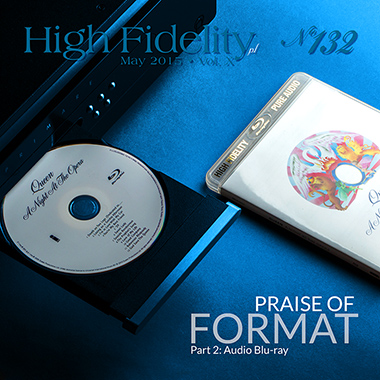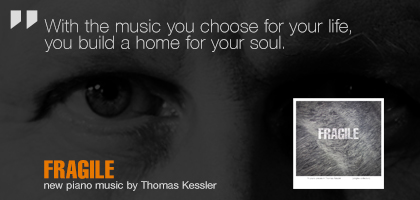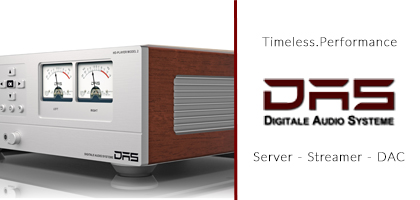No. 257 October 2025
- COVER REVIEW: ANCIENT AUDIO Silver Grand Mono Mk II ⸜ power amplifier • monoblocks » POLAND • Kraków
- KRAKOW SONIC SOCIETY № 153: 30 years of ANCIENT AUDIO » POLAND • Kraków
- FEATURE ⸜ music & technology: HISAO NATSUME presents - In search for the lost great pianism Chopin tradition » part 2 (France) » JAPAN • Tokyo
- REVIEW: AUDIOPHONIQUE Classic AP 300D ⸜ power amplifier » POLAND • Pruszków
- REVIEW: AVATAR AUDIO Holophony No. 1 ⸜ loudspeakers • floor-standing » POLAND • Osowicze
- REVIEW: DIVALDI Gold PA One ⸜ integrated amplifier » POLAND • Kraków
- REVIEW: J.SIKORA Aspire ⸜ turntable (deck + tonearm) » POLAND • Lublin
- REVIEW: MB AUDIO CABLE Silver ⸜ analog interconnect ⸜ RCA » POLAND • Turza Śląska
- REVIEW: XACT N1 ⸜ LAN switch » POLAND • Wrocław


|

|
|
Praise of format 
The Vinyl Factory, a British vinyl record producer, published a timeline showing the emergence and “death” of physical formats associated with music on its website in January. The compact cassette comes into existence somewhere in the middle of the timeline and disappears at a point really close to our times. The last physical format on the timeline is the optical Pure Audio Blu-ray disc (read more HERE). Pure Audio Blu-ray combines great capacity of the Blu-ray format with the transfer speed required by high-resolution sound (up to 24 bit and 192 kHz), multi-channel and stereo, with the ease of use characteristic for CDs. Pure Audio Blu-ray discs can be played on any Blu-ray player. Is an idea on how to sell high-resolution music material on Blu-ray discs, i.e. on a physical medium. The quote above has been taken from the website of a German studio called msm-studios which presented the Pure Audio Blu-ray format in 2009. The studio is known to audiophiles thanks to its cooperation with Stockfisch, 2L, Decca and Premonition. The presented idea had no influence on the broader market and would probably have died a natural death, had it not been for the music industry tycoon – the Universal Music Group. It called the High Fidelity Pure Audio (HFPA) into being in June 2013, by publishing a few dozen music albums on Blu-ray discs, with music ranging from Coltrane, Gilberto, Tears For Fears and Nirvana to classical music. It is obvious that the company wanted to earn money on something that it had earned on many times before, and to pull people away from the file market as files are easy to copy and therefore difficult to control. There is nothing wrong in earning money, especially if we get something sensible as a result, which is the case here. High-resolution (24-bit and at least 96 kHz, but also 192 kHz) signal is recorded on HFPA discs. It is exactly the same as in the case of DVD-Audio discs. The idea which makes this initiative worth looking at is the developed disc navigation method. 
When using Pure Audio discs, one had to select the sound type using colorful buttons on a remote control – each disc had “its own” assigned colors. Universal, in turn, proposed Blu-ray discs that are used in the same way as CDs. We put them into a Blu-ray player and it starts playing with a stereophonic PCM hi-res version. The same material can also be encoded in Dolby True HD or/and DTS-HD Master Audio on the disc. We can choose one of the options using also a screen menu. However, there is no image on these discs, apart from the menu. I have to say that a physical medium is something that particularly appeals to my heart. The “Praise of format” which is mentioned in the title of this mini-cycle (duology) is not only related to a given format (Compact Cassette, Blu-ray, etc.), but to FORMAT as such. The birth of the world of files heralded liberation from the constraints of formatting, offering freedom of choice. However, I don’t think that everything we get in this way is good and I believe some preliminary “formatting” has great advantages. It is because a given format can be improved and polished more easily, due to the fact that it’s clear what its limitations are. It is different with files – today’s DXD and DSD files will become obsolete tomorrow (or they have actually become obsolete already). It makes the situation of audio equipment manufacturers and record labels very uncomfortable – they are always late, especially when it comes to highly-specialized audio firms that make use of technological developments of other branches of industry. SYSTEM | ASSUMPTIONS Therefore, format = real progress and a lack of format = theoretical progress. So, I really liked the idea of the Universal company. It identifies the problem and delineates borders within which it is possible to move, but it also extends the borders much further than in the case of CDs, offering the possibility of playing high-resolution files up to 24 bit and 192 kHz. 
I arranged a sound test mainly for myself. I wanted to know where the audio industry is when it comes to high-resolution signal. I was also curious how companies have coped with the new challenge. Finally, I wanted to determine how much interest the new discs deserve. However, I hope you will read about it with interest, knowing that we are talking about the LAST physical audio format that has entered the market. Everything indicates it is not only the LATEST, but really the LAST one. The first problem is with finding an appropriate Blu-ray player. There are few high-end audio players with a good drive, decoding section, digital output and an analogue section available on the market, for example the expensive Marantz, Denon or, perhaps, Arcam equipment. The new Primare BD32 MkII player seemed to be the most sensible choice to me. It is an expensive CD player that is small and offers a lot of sound-enhancing functions, such as switching off the HDMI output and the possibility of sending 192 kHz signal through the S/PDIF output, as well as a user-friendly interface. I placed it on the Acoustic Revive RAF-48H anti-vibration platform and on Franc Audio Accessories ceramic Disc Classic feet. The power cable used was the Acrolink Mexcel 7N-9500. I divided the listening session into a few parts. I was mainly interested in comparing the sound of High Fidelity Pure Audio (as well as Pure Audio and classic Blu-ray audio) discs with the sound of CDs. I compared both exactly the same editions that only differed in format, as well as contrasted High Fidelity Pure Audio with the best available CD editions, i.e. Platinum SHM-CD. My control point were Long Play discs with the same remasters as the High Fidelity Pure Audio discs, as well as the best available editions (analogue Analogue Productions remasters, among others). Finally, I compared High Fidelity Pure Audio discs with HD files. 
The aim of the test was to demonstrate the capabilities of the given format, not of the devices. So, I wanted to show what can be obtained from High Fidelity Pure Audio discs under the best conditions, i.e. with a good transport and a high-class DAC. Therefore, I connected the digital output of the Primare BD32 MkII to the input of the three-piece Totaldac d1-twelve converter using the Siltech Golden Eagle 75 Double Crown digital cable. I did the same in the case of CDs – I used the Philips CD-Pro2M transport in the Lektor AIR V-edition which was connected to the same converter. Finally, I compared BDs and CDs on the Primare player, without an external converter. While collecting recordings for the test, I discovered that there are really a lot of them on the market – a lot more than 250 titles, I estimate – and the number is constantly growing. It is because we need to consider editions which are not listed as “Blu-ray”, but only as accompanying the basic material in “Deluxe” editions, such as Pink Floyd, Depeche Mode or Opeth boxes, single editions in the form of a Led Zeppelin concert, or joint reeditions of whole catalogues (e.g. Yes) that were released as CDs + BDs. I have only included a few chosen representatives of each of these groups in the list below.  RECORDINGS John Coltrane, A LOVE SUPREME  COMPARISONS As it can be seen in the description of the recordings that I used in the comparison, they included different kinds of music, different remasters and editions. However, the results that I obtained were repeatable and clear in the case of each comparison (Pure Audio Blu-Ray vs. CD, Pure Audio Blu-Ray vs. LP, Pure Audio Blu-Ray vs. Hi-Res files and one case of DVD 24/96 vs. CD vs. LP). Summarizing, i.e. drawing firm conclusions was more difficult than I had expected. Completely different conclusions can be drawn when we take sound into account, and yet different ones when elements outside music (connected with using the system) are added to sound. 
Signal source: Primare BD32 MkII The sound of High Fidelity Pure Audio BDs (Universal), as well as Audio BDs (other labels) is perfect. Decoded in a high-class external converter, it was close in tonality to what can be obtained with a good turntable. The focus and the way the depth of the recording was explored were also very similar. I’m not talking about detail or tangibility here. What I have in mind is emotional “closeness” of events – i.e. how easily we identify ourselves with music, whether music “gets in” or not. |
Both Coltrane’s A Love Supreme and Opeth’s Pale Communion, which musically constitute two different worlds, had deeper, more velvety sound with BD. The sound was deeper and the way in which the structure of a track was presented was clearer. As regards the CD versions listened to on the Primare BD player, the attack was stronger and the versions seemed to be more dynamic. However, it equally quickly turned out that the dynamics was a little “made up”, due to the fact that everything was more compressed and there was less differentiation. The sound was not bad, but after listening to a disc with hi-res material only once, I had an aftertaste of something good, calmer and deeper. When compared with it, the CD version seemed to be “temporary”. 
It was surprising that not only jazz profited from it, but also musical genres for which it is not typical, for example Opeth’s music, but also Depeche Mode’s Delta Machine and Bob Marley’s Legend. The saturation with colors and vitality of the hi-res versions was unquestionably better. Even though there is always some place for discussion, this should be clear to anyone who listens to the hi-res versions in a correctly set up system, with a correctly set up player. In my system, with the Totaldac d1-twelve converter, the difference was very significant. Not only extreme high-end equipment will show that, because music from the analogue outputs of the Primare player was also characterized by the same attributes. Signal sources: Let us repeat: Blu-ray discs with high-resolution audio material sound perfect. The most important features which bring them close to the sound of LP discs (the point o reference) are: depth, density, smoothness, dynamics, black background and vividness. It is all quite easy to hear, without much effort. When I played CDs and BDs containing exactly the same material from the multi-format Primare BD32 MkII drive, it clearly favored the BD version, but not always. 
When we compare the BD Audio version and the best available CD version, we need to consider not only the way in which signal is encoded, but also the pressing. When listened to on the Platinum SHM-CD (that is: CD 44,1/16), Queen had much more dynamic sound – it was clearer and had a better definition. The sound of the Blu-ray version was quite good, but the Japanese pressing (the best one that I know) simply declassed it. It shows that the appraisal of a given medium or format must be multi-dimensional and needs to take different variables into account. Among others, these variables include the method of pressing (publishing), but also the way in which the signal is provided to the converter. I carried out the basic comparison by listening to BDs and CDs from the same multi-format drive designed for visual discs, in the Primare player. The result of the comparison was clear. Everything got complicated during the next session, when the conditions were “fairer” for each type of disc. The Blu-ray discs were played in the Blu-ray Primare player (dedicated to BDs), whereas the CDs were played in the Ancient Audio player with the Philips CD Pro-2M transport, dedicated to CDs. Signal from both players was converted in the same converter. Now, the sound of almost all the CDs was better than of the BDs. The depth of sound was greater and everything calmed down. The BDs still had slightly better dynamics in the macro scale, but it cannot be avoided – 24 bits make it possible to record signal with much lower compression. However, it was surprising that compression on CDs (unavoidable) also brought about positive results, such as better clarity, nicer definition and much better bass. The bass was better controlled and had higher energy. More was “going on” in the treble on the CDs, meaning that the information that I was receiving made more sense. In case of the BDs, the treble was smoother and more velvety, but also characterized by lower resolution. 
We will hear this already when listening to the first discs. However, the longer we will listen to the BD format with hi-res signal, the more we will appreciate it. It is extremely vivid and direct. When played in the right way, discs of this type are not tiring, even if the listening session is long. It seems that the sound is soft, even though there is a lot of information in it. A return to CDs shows that there is a slight problem with the resolution of BDs, but the difference is not as big as at the beginning of the listening session. Additionally, BDs have an excellent sound stage. HOW TO ACHIEVE WHAT WE WANT TO ACHIEVE The Blu-ray Pure Audio format has been conceived as an alternative for Hi-Res files. The sound of the same recordings played from a BD and from a file, using the same player, was better in the case of discs, as files offered a worse definition of sound as such. The density and smoothness which I liked so much in the BDs were not that important in files anymore. Using BDs was a problem, however. It was easy with Pure Audio versions – they are used in a similar way as CDs. It wasn’t so simple with other pressings. In the case of Depeche Mode’s Delta Machine, Blu-ray behaved like Pure Audio, i.e. it started playing with the stereo version. As regards Opeth, it was played in a multichannel version, mixed to stereo. In order to return to stereo, it was necessary to press the “Audio” button twice. Finally, it did not play Marley’s Legend at all, as the menu turned on, which is unacceptable in pure audio. Only after selecting a version was it possible to play the recording – what a nightmare! 
Taking it all into account, I have drawn a few conclusions that, hopefully, will also make you, “High Fidelity” readers, interested. If we have a good Blu-ray player and want to see what hi-res is all about, it is worth buying BD Pure Audio discs. There are quite a lot excellent titles included in the series: jazz, rock and classical music, so one can build a really interesting record library. If our Blu-ray player is not the best, but we use it to listen to CDs (using an external DAC, for example), such a shift makes even more sense. The problem with cheap BD players is that they do not play CDs too well. A separate digital-to-analogue converter will not prove helpful here, as such is their nature. As regards DVDs (DVD-Audio) and Blu-ray (Blu-ray Audio) discs, their life is easier right from the start, as clocks in such players are optimized for 48 kHz sampling frequency and its multiples. So, everything is a bit problematic for CDs already at the beginning. Blu-ray Audio discs will sound much better than CDs on such a player. 
However, if we have a high-end CD player and collect the best CD editions, the advantages of hi-res signal are not fully justified for me. I suppose I’m a caveman, but it seems to me that high-resolution signal reproduction is still in its infancy. A lot has to change in it for me to make sense from the musical and not only technical point of view. VERDICT To put a long story short, in order to make things clear I will say that Blu-ray Audio discs played using a Blu-ray player sound much better than their CD equivalents played using the same player. The best CD versions are an exception – they are better. SUMMARY I forgot to mention one thing in the previous editorial. Before I sat down to test the sound of the Nakamichi Dragon cassette player, I sprayed myself with Play Intense Eau de Toilette by Givenchy which I bought specifically for this occasion. The bottle with the “Play”, “RWD” and “FFWD” button symbols and the place we need to press which resembles the record button – that was IT! Unfortunately, I haven’t found perfumes “dedicated” to Blu-ray Pure Audio lovers, which tells us a lot about the market attitude to the last physical audio format that we have invented. 
While the Compact Cassette format is connected with our past and is part of the retro style, Blu-ray Pure Audio is not associated with any emotions – it is just another tool. Sound tests have shown that it is an excellent one and I definitely prefer it to files. However, it is just my point of view. You probably have a different opinion, because almost everyone loves files, don’t they? In spite of this, I would encourage you to experiment. Even if, as a result, you will not exchange files for physical discs with hi-res content, you will at least know what standard to follow when it comes to files. If anyone has enough enthusiasm, High Fidelity Pure Audio (HFPA) discs will be an excellent source of sound for them. Additionally, such a person will own the music – files are only “rented” to us and we cannot give or sell them to anyone else. Having said that, I will add that I think it is a format which is doomed to extinction and that companies will not support it for a long time. In this way, the potentially best physical digital format is also one that nobody is waiting for and that is known by just a few. 
And me? I will simply buy more Platinum SHM-CDs – I have just received a package with four Tangerine Dream CDs and a box for them. I will remain in my cave – happy, having more time to listen to music. It is because using CDs, just like using tape cassettes, requires only one single button: “Play”. The rest is MUSIC. Wojciech Pacuła |
About Us |
We cooperate |
Patrons |
|
Our reviewers regularly contribute to “Enjoy the Music.com”, “Positive-Feedback.com”, “HiFiStatement.net” and “Hi-Fi Choice & Home Cinema. Edycja Polska” . "High Fidelity" is a monthly magazine dedicated to high quality sound. It has been published since May 1st, 2004. Up until October 2008, the magazine was called "High Fidelity OnLine", but since November 2008 it has been registered under the new title. "High Fidelity" is an online magazine, i.e. it is only published on the web. For the last few years it has been published both in Polish and in English. Thanks to our English section, the magazine has now a worldwide reach - statistics show that we have readers from almost every country in the world. Once a year, we prepare a printed edition of one of reviews published online. This unique, limited collector's edition is given to the visitors of the Audio Show in Warsaw, Poland, held in November of each year. For years, "High Fidelity" has been cooperating with other audio magazines, including “Enjoy the Music.com” and “Positive-Feedback.com” in the U.S. and “HiFiStatement.net” in Germany. Our reviews have also been published by “6moons.com”. You can contact any of our contributors by clicking his email address on our CONTACT page. |
 



|
   |
main page | archive | contact | kts
© 2009 HighFidelity, design by PikselStudio,
projektowanie stron www: Indecity







 t was really easy, perhaps even too easy, to write about a format which is connected with so many memories and had witnessed all the most important things in our lives. I had to put a lot of effort into holding back a little tear which started to flow from my eye when I was writing. It was not only me –
t was really easy, perhaps even too easy, to write about a format which is connected with so many memories and had witnessed all the most important things in our lives. I had to put a lot of effort into holding back a little tear which started to flow from my eye when I was writing. It was not only me – 


